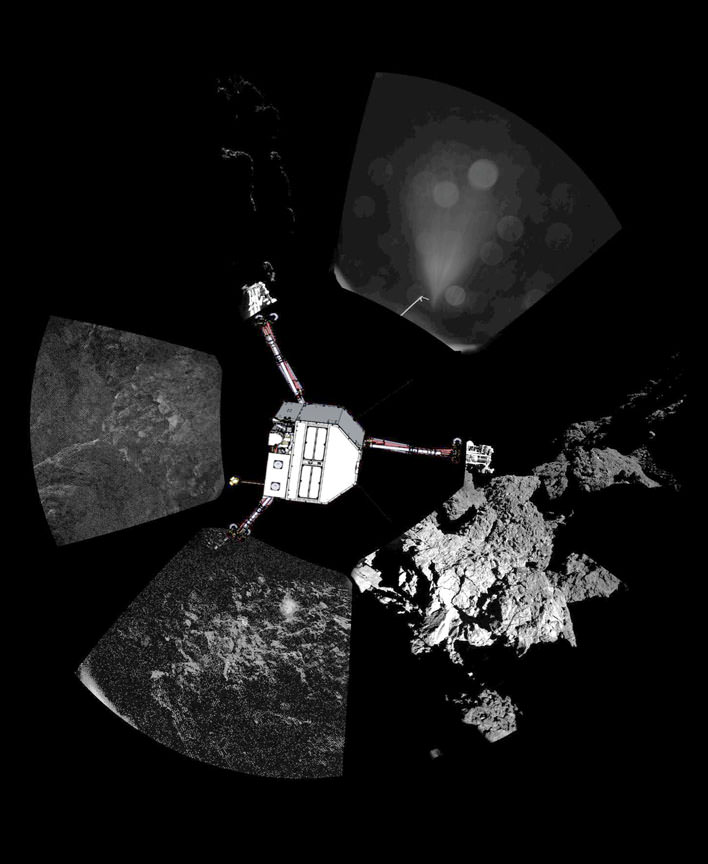And we have touchdown! This is what the feet of the Philae lander experienced as the spacecraft touched down on its cometary destination last week. You can hear the brief sound from the Cometary Acoustic Surface Sounding Experiment (CASSE) above. What’s even cooler is the scientific data that short noise reveals.
CASSE is embedded in the three legs of Philae and recorded the first of three landings for the spacecraft, which bounced for about two hours before coming to rest somewhere on Comet 67P/Churyumov–Gerasimenko (where is still being determined).
About that first touchdown: “The Philae lander came into contact with a soft layer several centimetres thick. Then, just milliseconds later, the feet encountered a hard, perhaps icy layer on 67P/Churyumov-Gerasimenko,” stated German Space Agency (DLR) researcher Klaus Seidensticker. He is the lead for the Surface Electric Sounding and Acoustic Monitoring Experiment (SESAME), which includes CASSE.
CASSE also recorded information from the lander’s feet from Philae’s final resting spot, and transmitted information about the MUlti PUrpose Sensor (MUPUS) as the latter instrument drilled into the surface. Other instruments on SESAME found no dust particles nearby the lander (which scientists say means the landing site is quiescent) and also sensed water ice beneath the lander.
Philae is now in hibernation as its final resting spot does not include a lot of sunlight to recharge the solar panels, but the researchers are hoping that more energy might be available as 67P draws closer to the Sun in 2015. The orbiting Rosetta spacecraft is continuing to collect data on the comet.
Source: DLR


This is pretty cool but I like these ambient EM emission sounds from the comet itself even more: https://www.youtube.com/watch?v=HA_J_3xyt8g
Ionization sputtering generates a localized magnetic field and then the passage of the comet interacts with the solar wind to generate radio waves. Right?